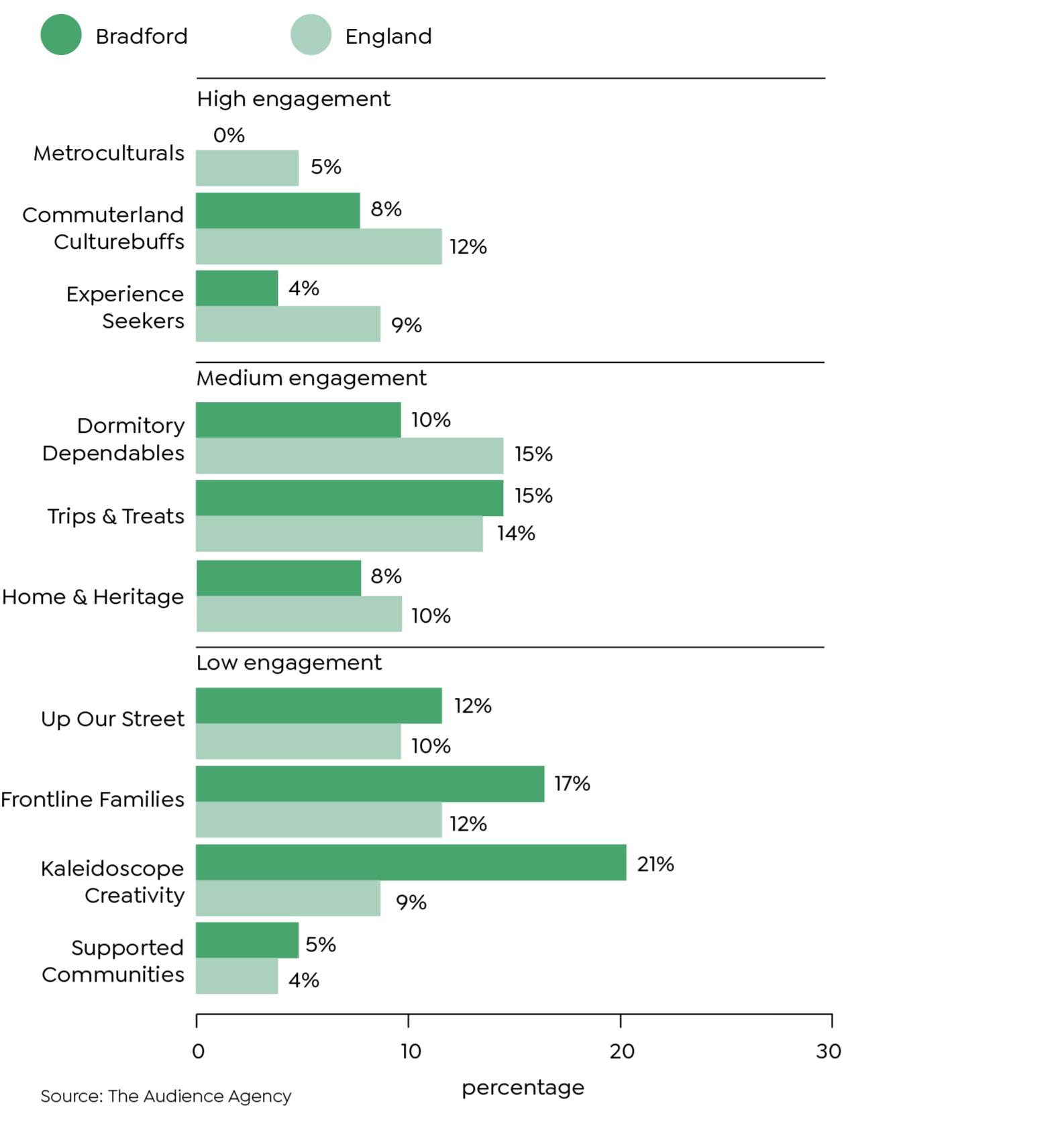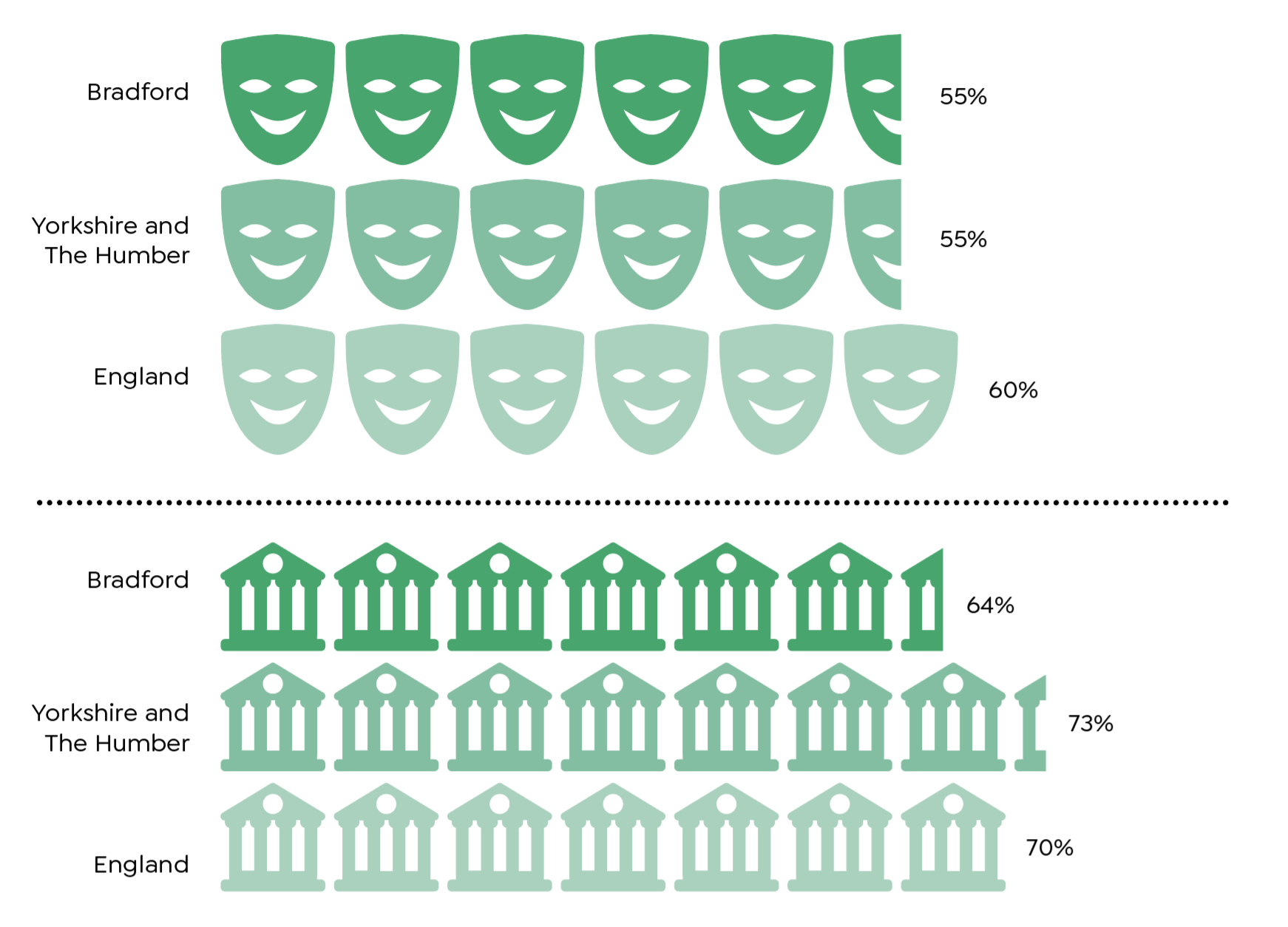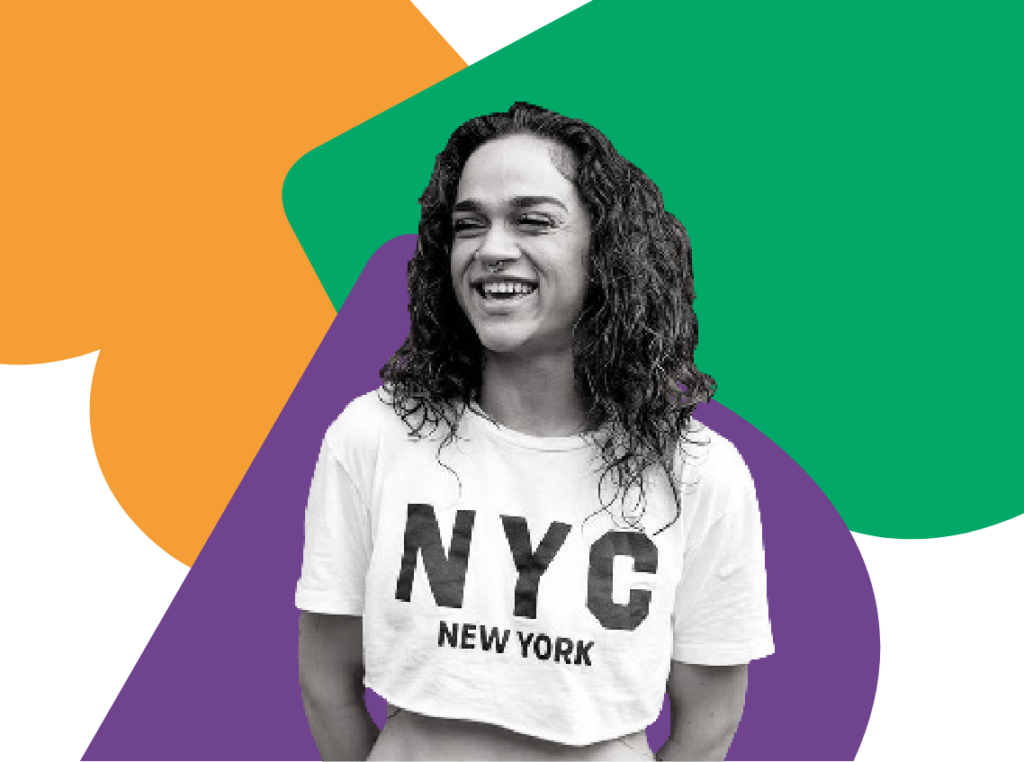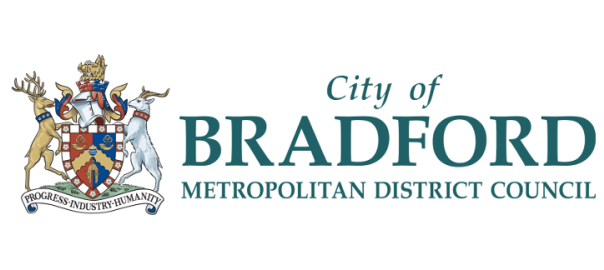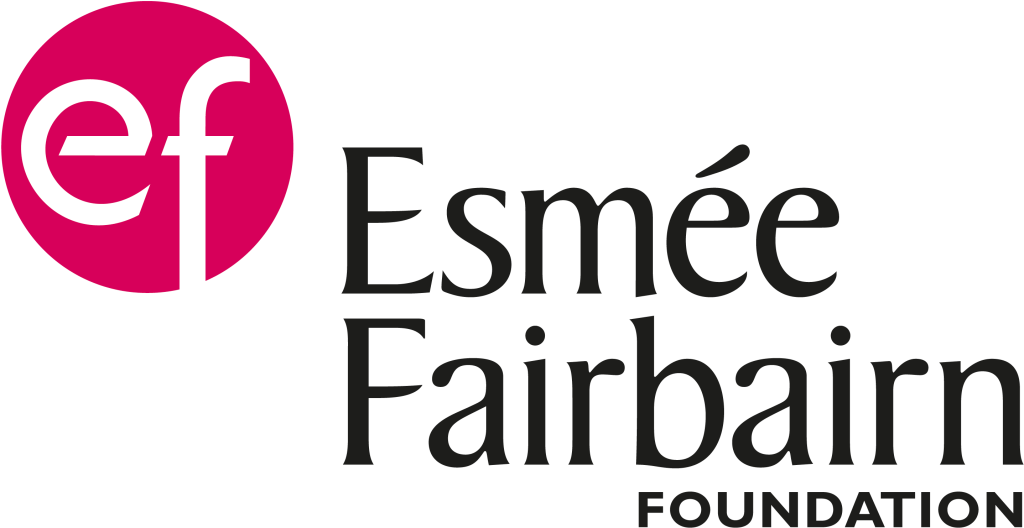Other research challenges this negative picture. For example, the CPP Culture Is Me survey undertaken by Indigo Ltd shows that 88% of respondents in Bradford engage with culture often or occasionally40 According to the survey results, culture is highly valued by the residents of Bradford district, receiving a score of 8 out of 10. A vast majority of the residents (94%) believe that culture makes Bradford a better place to live, 88% feel that it enhances their wellbeing and 92% agree that it should be accessible to all children.
The residents of Bradford district are actively involved in cultural activities, with only 12% reporting that they rarely or never participate in cultural events. Two-thirds of the people who responded to the survey volunteer for cultural projects, and 80% engage in cultural activities within the district. However, the cultural activities that they are most involved in are not typically measured or estimated by existing tools. The most popular cultural activities are walking, food, parks/nature and film. It’s noteworthy that this survey was conducted during and right after the Covid-19 lockdowns, implying that a considerable number of individuals had been restricted to visiting parks and walking for an extended period. Additionally, these activities tend to take place in non-traditional cultural establishments such as homes, public spaces, cafes, bars and community centres.
Interestingly, the cultural activities that residents would like to see in Bradford district do not necessarily involve traditional art forms in traditional spaces. The most desired activities include those that bring communities together, utilise heritage buildings, develop talent and offer outdoor events.
Figure 14: Cultural engagement in Bradford
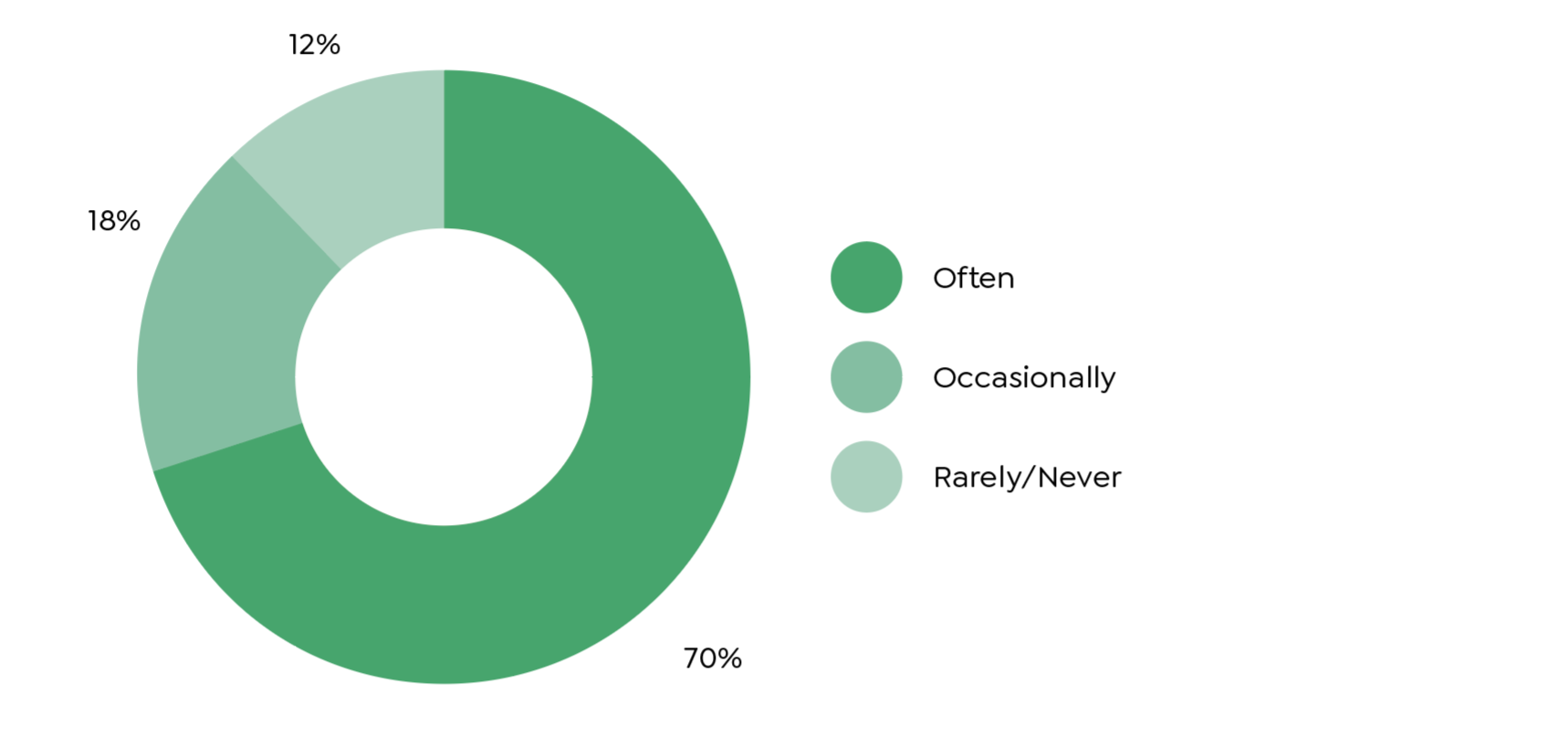
Source: CPP Survey results
Figure 15: Perceived Value of Culture in Bradford
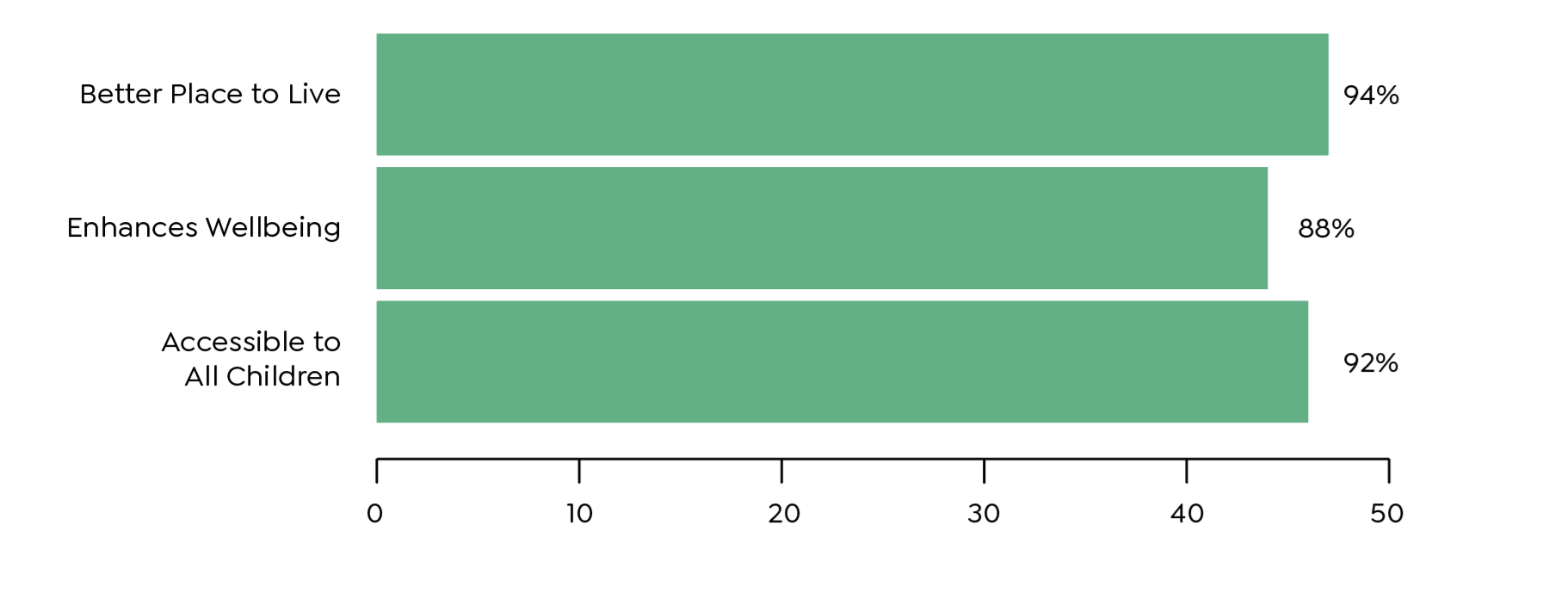
Source: CPP Survey results
Finally, data is available from Audience Finder, operated by The Audience Agency with funding from Arts Council England. This provides a profile of how engaged Bradford residents actually are with ticketed and live events.41 According to Audience Finder booker data for the 3 years between April 2016 and March 2019 Bradford residents:
- Represented over 63,000 cultural bookers (15% of Bradford population).
- Bought over 600,000 tickets (1.4 tickets per adult head of population).
- Spent over £16m on tickets to cultural events.
Almost half of the tickets purchased were for events happening outside Bradford district and 75% of the cultural visits that happen outside the district are in Leeds.42

